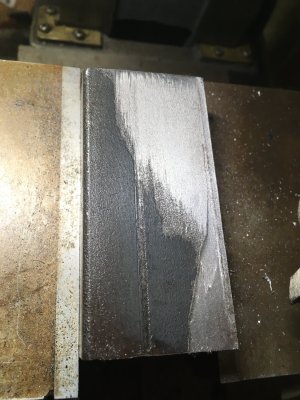- Joined
- Aug 29, 2019
- Messages
- 1,257
Today I ground a HSS tool bit for my Southbend 7". My shaper experience is 5 years ago I used this shaper to make a TEE Nut for the compound on my Clausing 100 lathe. It has not been turned on since. I realized when using it the right side way was not oiling. Fixed the lube problem this week and now I am in the process of self teaching myself how to grind shaper bits and how to run the machine. Using a piece of HRS I decided to make it flat on all 4 sides. As the pictures will show HRS is not at all flat from the mill and is normally high in the middle on all 4 sides. I first started with a virgin peice os 1/4"x1/4' HSS and ground it to work on the shaper. Put it in an Armstrong angled tool holder and started cutting chips. After 3 or 4 passes I changed to another tool holder that is straight. It seemed to work much better. Then I changed to a lathe bit I had in my tool bit drawer. It was really sharp but did a less than acceptable job. Part being the tool /operator/material and setup. As you can see in the still photos the straight tool holder moved from verticle to about 92 or 93 degrees. I'm thinking that I may have the side shift of the table backwards causing it to put pressure on the tool as it is in the return stroke. Also not sure of what the rate of travel is. The settings range from .000 to .012 per stroke. Gona do some more reading tonight and more experimenting tomorrow. Feel free to add any advice or criticism . Just remember a person can be a top notch machinist and know very little about running a shaper. I want to perfect my shaper skills. Thanks for stopping by.


















